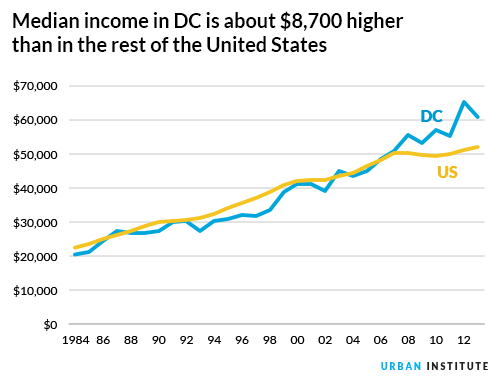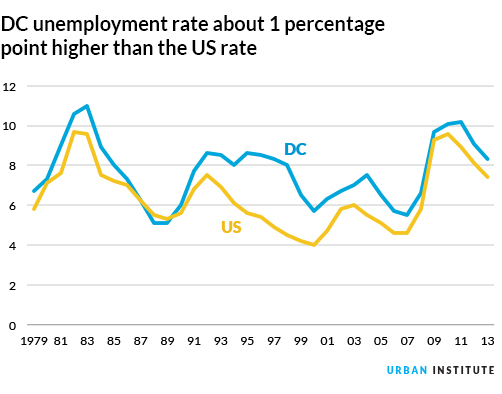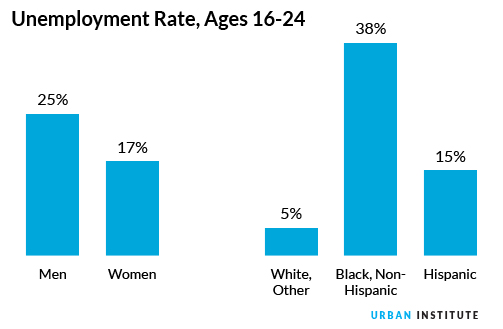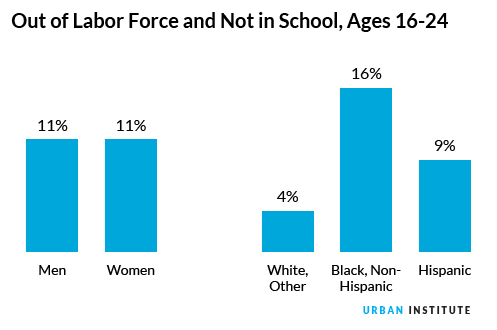
As Mayor Bowser settles into her office, she leads a city that is growing more prosperous. Unfortunately, too many DC residents are not sharing in that prosperity, resulting in uneven economic progress across the city.
Following the most recent recession, economic progress in DC has been mixed: median income rose, but so did unemployment.

Between about 1984 and 2007, median income in DC and the nation tracked each other relatively closely. Starting around 2008, however, DC’s median income generally continued to rise while those across the nation stagnated. Between 2008 and 2013, DC’s median income grew by over 9 percent, reaching nearly $61,000, while the median income in the nation as a whole grew by about 3 percent.
At the same time, the unemployment rate in DC continues to be higher than in the rest of the country. There have only been two years between 1984 and 2013 when DC’s unemployment rate fell below that of the nation as a whole (1988 and 1989). More recently, DC’s unemployment rate stands about 1 percentage point higher than in the nation as a whole.

These countervailing trends suggest that certain groups continue to struggle even as the economy recovers. To better understand these differences, we examined the labor market status and educational attainment of DC residents broken down by race, gender, and ethnicity, primarily focusing on young people. For example, nearly a quarter of young men ages 16-24 were unemployed in 2010 (the most recent data available to us).
Even more alarming, however, are differences in the unemployment rate by race and ethnic group. Nearly 40 percent of black, Non-Hispanic young people in DC are unemployed. Compare that share with the roughly 5 percent of white young people in DC who are unemployed and you start to see significant disparities.

If we look at young people who are completely disconnected from the workforce, we see similar disparities. About 11 percent of young men and young women are not working, not looking for work, and not in school. Among racial and ethnic groups, nearly 16 percent of young, black, non-Hispanics are disconnected from the workforce.

As the economy locally and across the nation continues to improve, significant economic gaps remain between different groups. We have outlined a variety of policies and programs the current DC mayor could pursue to help close these gaps, such as enhancing the skills of DC’s workforce by, for example, raising adult literacy; creating more job opportunities by better connecting DC’s job market to the larger region; and improving job quality by creating career paths for young workers to ultimately achieve a higher standard of living.
Tune in and subscribe today.
The Urban Institute podcast, Evidence in Action, inspires changemakers to lead with evidence and act with equity. Cohosted by Urban President Sarah Rosen Wartell and Executive Vice President Kimberlyn Leary, every episode features in-depth discussions with experts and leaders on topics ranging from how to advance equity, to designing innovative solutions that achieve community impact, to what it means to practice evidence-based leadership.